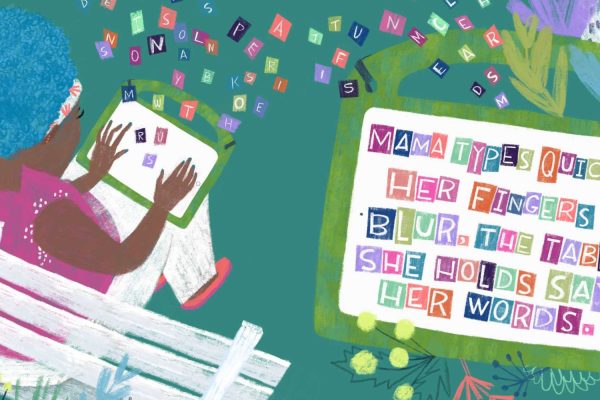
Alternative methods for written communication: a guide to developing typing skills
By Mahek Bansal
Handwriting plays a significant part in many of the academic, work and leisure tasks people engage in during childhood and into adulthood. However, there are many reasons why children may require additional support to build handwriting skills such as difficulties with motor skills, visual perception skills, or even speech and language delays.
When a child needs additional support with handwriting it can impact their ability to develop other skills such as literacy, reading comprehension and written expression. Cognitive load theory explains that by simplifying and automating some cognitive processes (eg. typing or handwriting) we can free up space in the brain for higher order thinking. Hence, providing alternative methods for written communication can support children to reach their fullest potential. Alternative methods do not need to be seen as a replacement for handwriting but as a way to support learning and development.
ALTERNATIVE METHODS FOR WRITTEN COMMUNICATION
Some alternative methods of written communication include typing, voice-to- text and scribes. Each child’s individual strengths and areas of support will need to be considered when choosing an appropriate method of written communication. For example, children with clear speech and language may find voice-to-text suitable however difficulties with articulation or pronunciation can present as barriers to using this type of software.
Typing is becoming an increasingly common life skill with many schools and workplaces requiring the use of computer skills to complete tasks. Whilst children are often exposed to explicit typing instruction in later years of primary education, research suggests that formal typing instruction should begin as early
as kindergarten to ensure that children develop strong foundations in typing skills.
HOW DO CHILDREN LEARN TYPING?
The development of typing skills occurs in three stages, in accordance with motor learning theory.
Stage 1: Cognitive Stage
At first, children require explicit instruction and feedback to break down the individual components required for typing. This includes pre-typing exercises with emphasis on fine motor skills such as finger isolation and dexterity, letter identification and hand positioning. These skills are essential to ensure strong foundations to commence typing. Throughout these activities, children will require extensive practice as well as specific visual and verbal feedback.
Stage 2: Associative Stage
This stage focuses on continued practice to refine skills and reduce errors.
Here children can be orientated to the home row for touch typing and begin develop their muscle memory for finger movements required for common letters. It is important that in this stage we are providing children with specific feedback regarding accurate finger placement and finger movements to ensure that correct motor patterns are being reinforced in the brain. During this stage, computer-based typing programs can be used to encourage practice of typing skills in an engaging way!
Stage 3: Autonomous Stage
In the final stage, the skill becomes more autonomous requiring less cognitive effort. Hence, children are more fluent in typing and can switch their attention to their writing content as they are not required to place as much cognitive energy into the motor aspect of keyboarding. Here you can notice children becoming confident and faster in typing. It is important to note that it is expected that typing skills are as fast as handwriting.
By embracing alternative methods of written communication and offering comprehensive support, we can empower children to reach their fullest potential and overcome any challenges they may face with handwriting.
If your child requires support with their handwriting or is investigating alternative methods of written communication to support their learning you can reach out to Occupational Therapy Helping Children at [email protected] | 02 9913 3823 | occupationaltherapy.com.au






